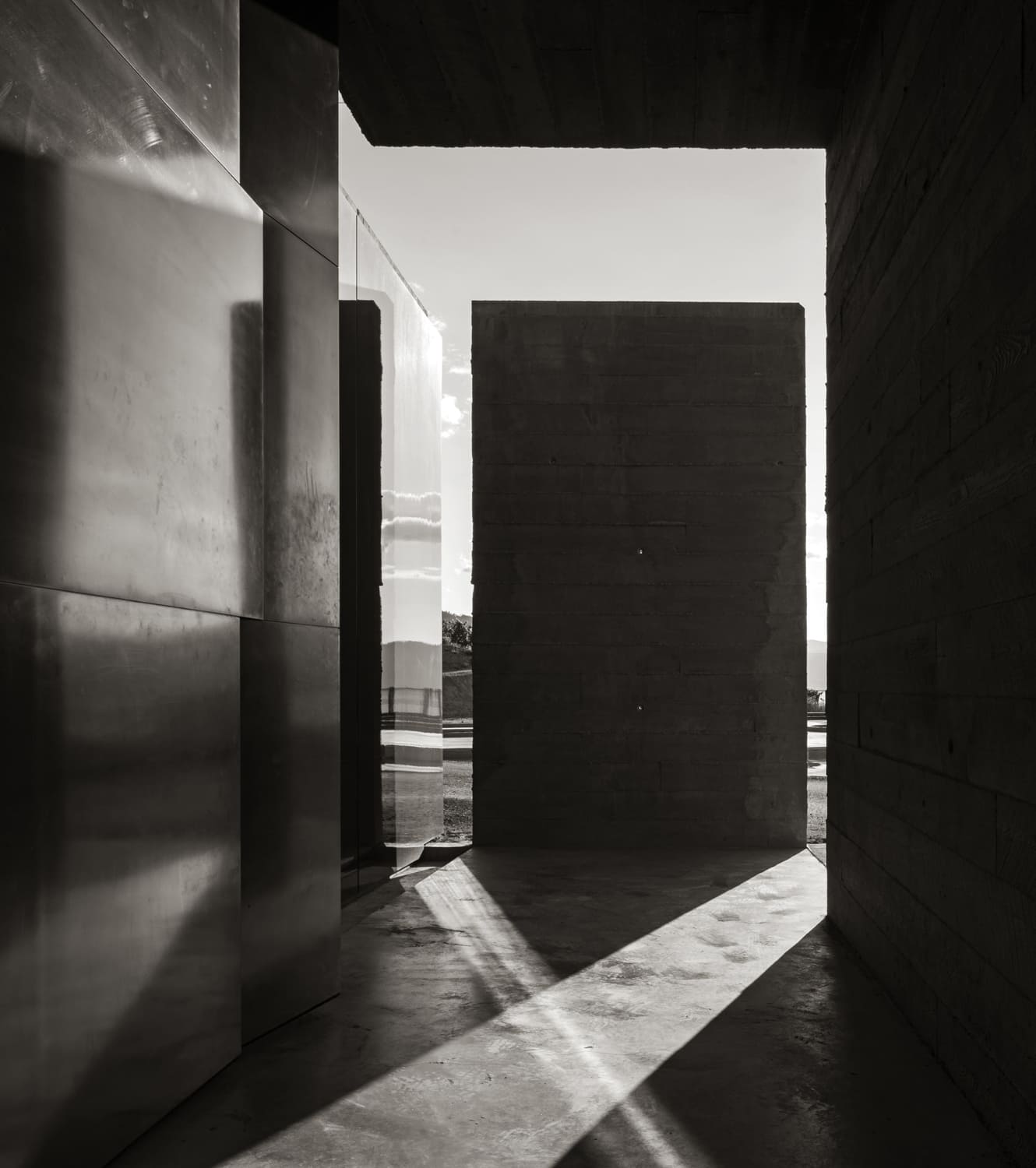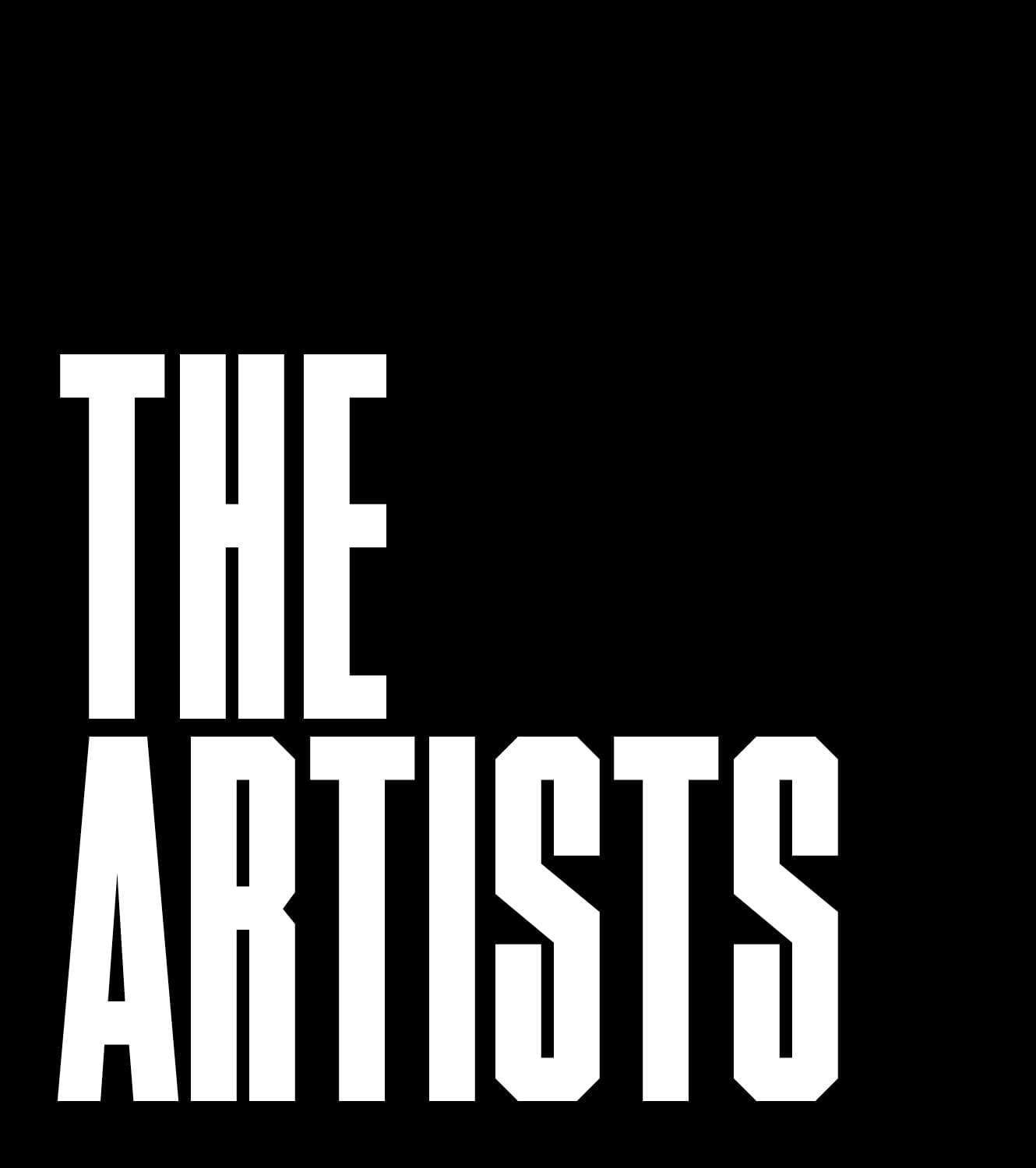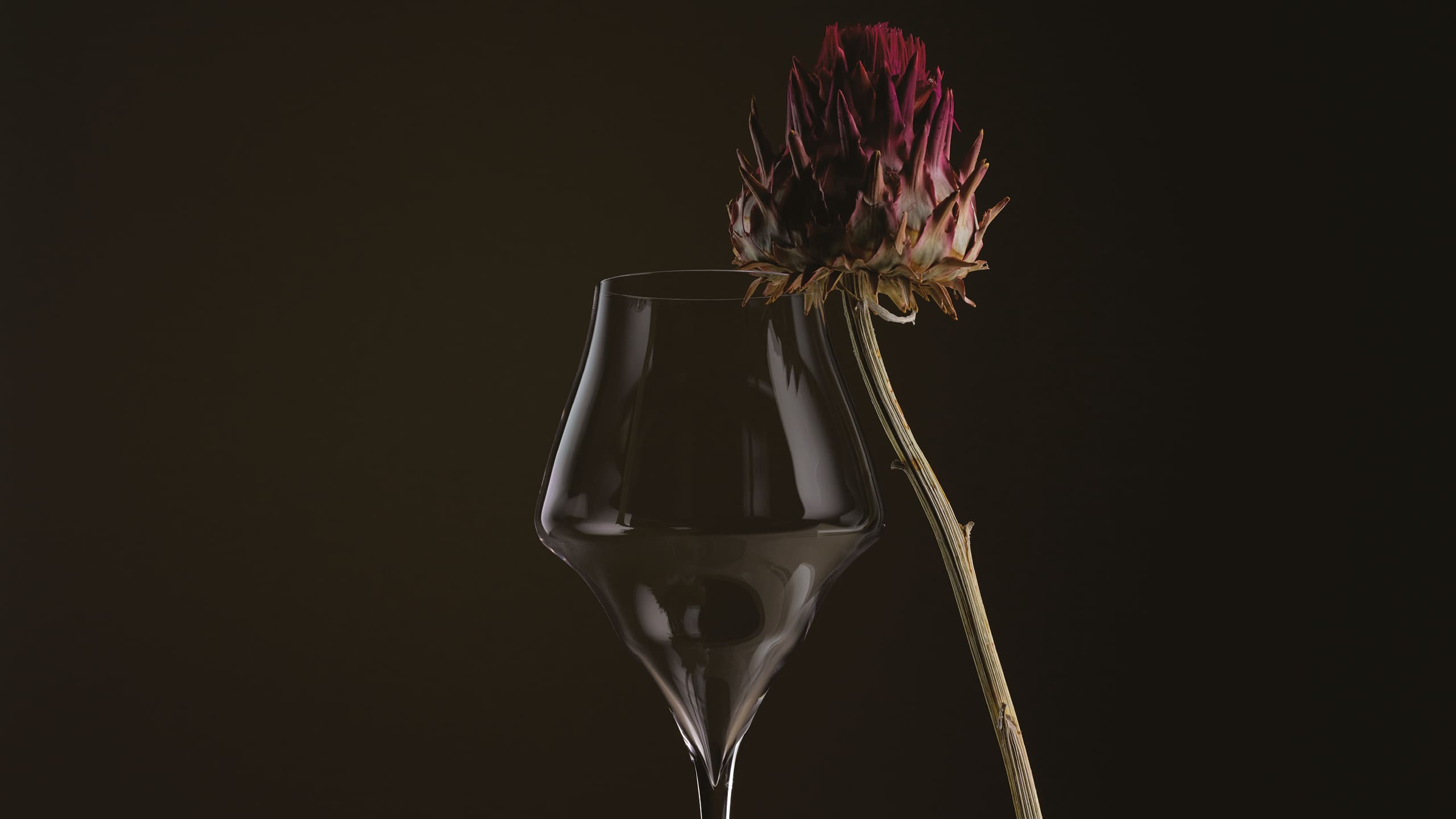
CHANGING GLASS
New generations are challenging traditional drinking etiquettes, as Debika Ray investigates the modern world of glassware
"When I was young, my parents had lots of parties and I was often in charge of the bar and making the drinks,” says London-based international designer Lee Broom, adding, “This is something that I still love doing today when I host my own parties.”
And central for Broom is the drinking vessel: few objects evoke the conviviality of a social gathering as the glistening — and clinking — of a well-designed wine glass. The right glass, along with good wine and company, can create a memory-making experience.
For the designer, it is crystal’s shimmery, delicate elegance that does it, and which inspired the look and feel of his “Half Cut” Champagne coupes. Broom’s designs are gorgeous and collectible, driven by creating a certain ambience. The collection repurposes four styles of crystal decanter stoppers as the base of the glass, and can be mixed or matched.
“The nostalgic feel is a throwback to another era,” he says. “I like to create a piece that not only looks beautiful, but that has a good weight, sits in your hand well, and feels right when it touches your lips.”
The market for stemware is changing, as younger wine drinkers eschew varietally driven stems — once a must for any home — in favor of glasses that fit their lifestyles or décor. And with a wider move towards conscious consumption, more people are scouring flea markets and online stores, eBay and Etsy, for unique pre-owned and vintage pieces to express their philosophies and personal styles. Today you’re likely to see humble vessels such as tumblers, canning jars, or metal picnicware for “Tuesday night drinking,” while the higher-quality glassware is brought out for occasions when the wine itself is the star.
For some oenophiles like Blake Gilbert, Maze Row’s senior business development manager, that issue is easily resolved with a universal glass, a shape that accommodates multi styles. Gilbert says he often opts for Riedel’s version, but Zalto — another Austrian entrant in the high-end market — is a second choice. Famed for the thinness of its stemmed glasses, the Zalto is often found in elegant tasting rooms.
John Irwin agrees. “If you go to a tasting room in Champagne, they will pour into Zalto white wine glasses,” says the Italian wine ambassador with Vinitaly International and Maze Row specialist. “I remember touching one for the first time and being shocked by the delicacy.” As a category, luxury wine glasses are in “rude health,” he remarks, with new brands entering the field all the time and finding an enthusiastic audience. Meanwhile, the likes of Broom cater to those for whom style is as important as functionality.
But for casual entertainment, many are ditching the stems for dishwasher-safe glasses that can transition from aperitif to dinner. The trend takes its cues from the Paris café culture and popular natural-wine bars that have democratized the wine scene, making wine more accessible to a greater diversity of drinkers. And, in some cases, a more relaxed approach helps put wines in context. But Irwin advises keeping that in mind when choosing glassware. “To break out your best stems for a simple Vinho Verde on the patio can feel as out-of-place as pouring cru Barolo in a tumbler,” he says.

Banner image: Kurt Josef Zalto’s handmade “Josephine No. 4 Champagne” and above “Half Cut” Champagne coupe by Lee Broom resemble crystal decanter stoppers
THE COLLECTABLES
Today’s modern glassware weaves function and fantasy in pieces that are conversation starters as much as drinking vessels, writes Debika Ray.
Fine crystal is synonymous with glamour, so a guaranteed way to add some dazzle to your cabinet is to mine the collections of the likes of the luxury French house Baccarat and Irish heritage maker Waterford.
Several contemporary designers have also made wine glasses worth keeping, from Lee Broom (see previous page) to Tom Dixon, whose “Tank” collection takes inspiration from scientific glassware, or Danish Helle Mardahl’s fantastical glasses that will give your dinner table an Alice in Wonderland-like feel. Meanwhile in the Venetian Lagoon, following a long tradition of glass-blowing — most famously the millefiori style — artisans on the island of Murano are creating one-off objects that will set your collection apart.
Serious wine aficionados turn to the specialists, many of whom are based in Austria, home of prestige glassware including the 266-year-old Riedel company. Gabriel-Glas has made its name as the go-to universal glass made of lead-free crystal in two styles — a sturdy version for everyday drinking and a paper-thin mouth-blown glass.
Josephinenhütte, the fabled 19th century European maker of fine glassware, brought back to life three years ago, makes an impressive capsule collection under the creative direction of glassware designer Kurt Josef Zalto. The “Josephene” are quirkily shaped, whisper-thin vessels, with each glass hand formed as a single harmonious piece. The striking shape is designed to encourage the movement of liquid for the flavors to evolve fuller. The award-winning glassware has been described as “brutally honest” by German wine expert Nils Lackner: “If the wine is no good, she’ll show you.”
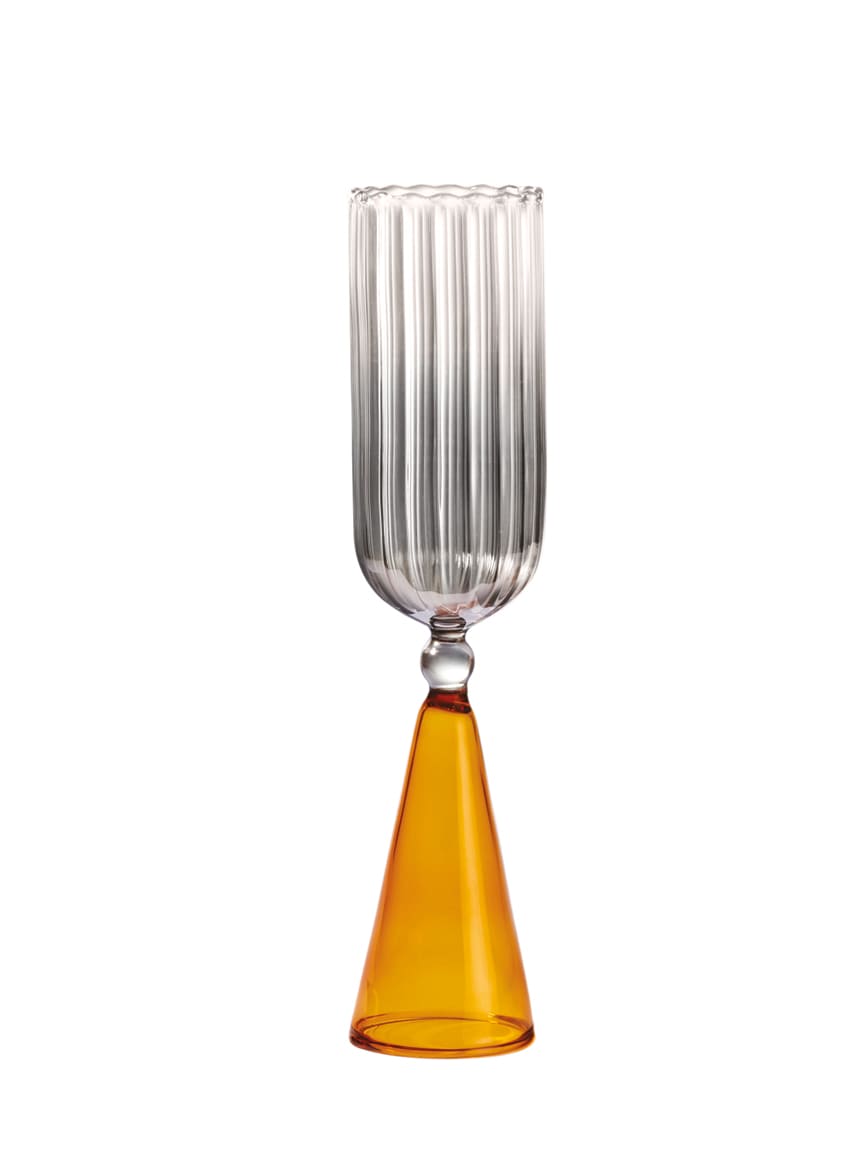
Serena Confalonieri’s “Calypso Collection” evoke the spirit of exotic flowers on a desert island

Marcel Wanders Studio interprets Baccarat’s “Harcourt” icon

Inspired by the lavish afternoon tea ceremony, Helle Mardahl’s “Cocktail Cream Tea” are designed to evoke a sense of wonder
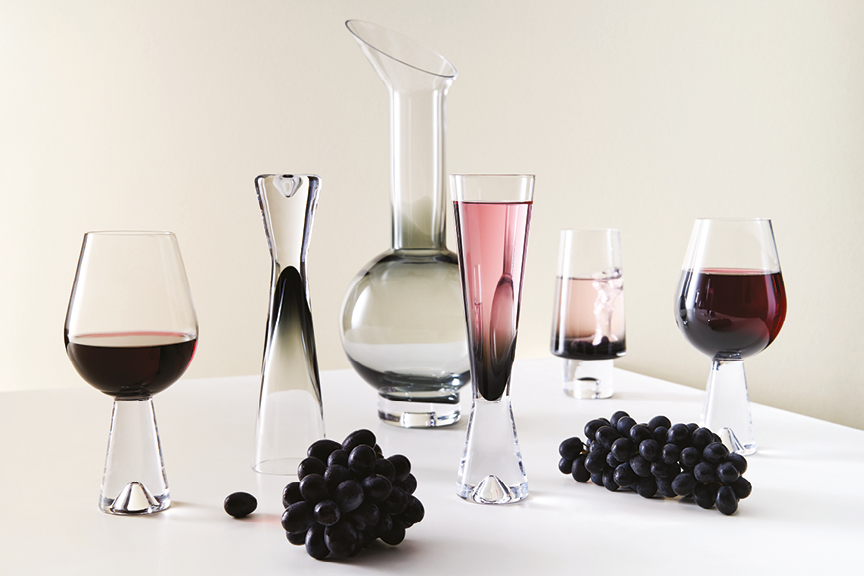
Scientific glassware inspires Tom Dixon’s “Tank” collection
Photography ©Josephinenhütte, Lee Broom, Alastair Philip Wiper, Laurent-Parrault for Marcel Wanders, Andrea Agrati for Serena Confalonieri
WISH LIST
Theodora Thomas searches the buzzy world of glassware from Design Miami to Milano Salone del Mobile, Maison et Objet Paris, and creative festivals across New York, London and Dubai

Calypso Collection by Serena Confalonieri
The Milan-based designer’s colorful handblown range of wine glasses and Champagne flutes give the sense of drinking out of “exotic flowers on a desert island”.
©Andrea Agrati

Estelle Colored Glass
Made by artisans in Poland, these handblown pieces come in a range of jewel and pastel colors, with both stemmed and stemless options.
©Estelle

Maison Perrier-Jouët X Andrea Mancuso
Designer Andrea Mancuso’s “Metamorphosis” collection of six Art-Nouveau inspired glasses represents the journey of nature into Champagne.
©PJ Analogia
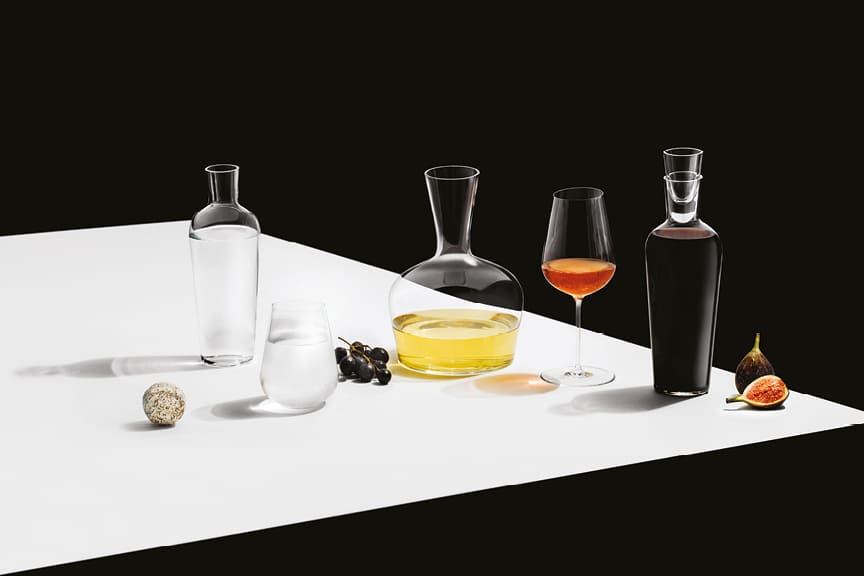
Jancis Collection by Richard Brendon
A collaboration between a designer and wine expert has resulted in a single crystal, dishwasher safe glass to enjoy any type of wine, handblown by craftspeople in Slovenia.
©Jancis Collection
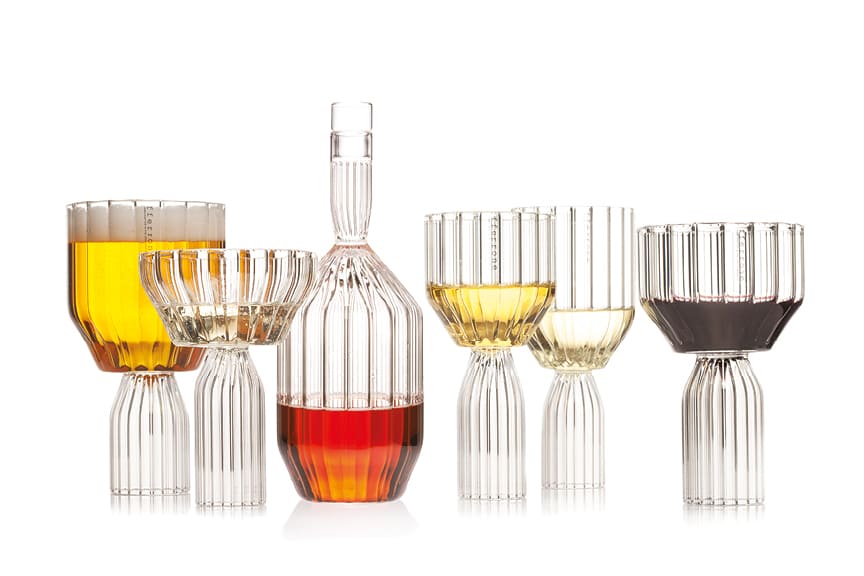
Fferrone by Felicia Ferrone
From her base in Chicago and Milan, the designer blends the considered proportion and detail of European influences with contemporary minimalism to create unique silhouettes.
©Fferrone design
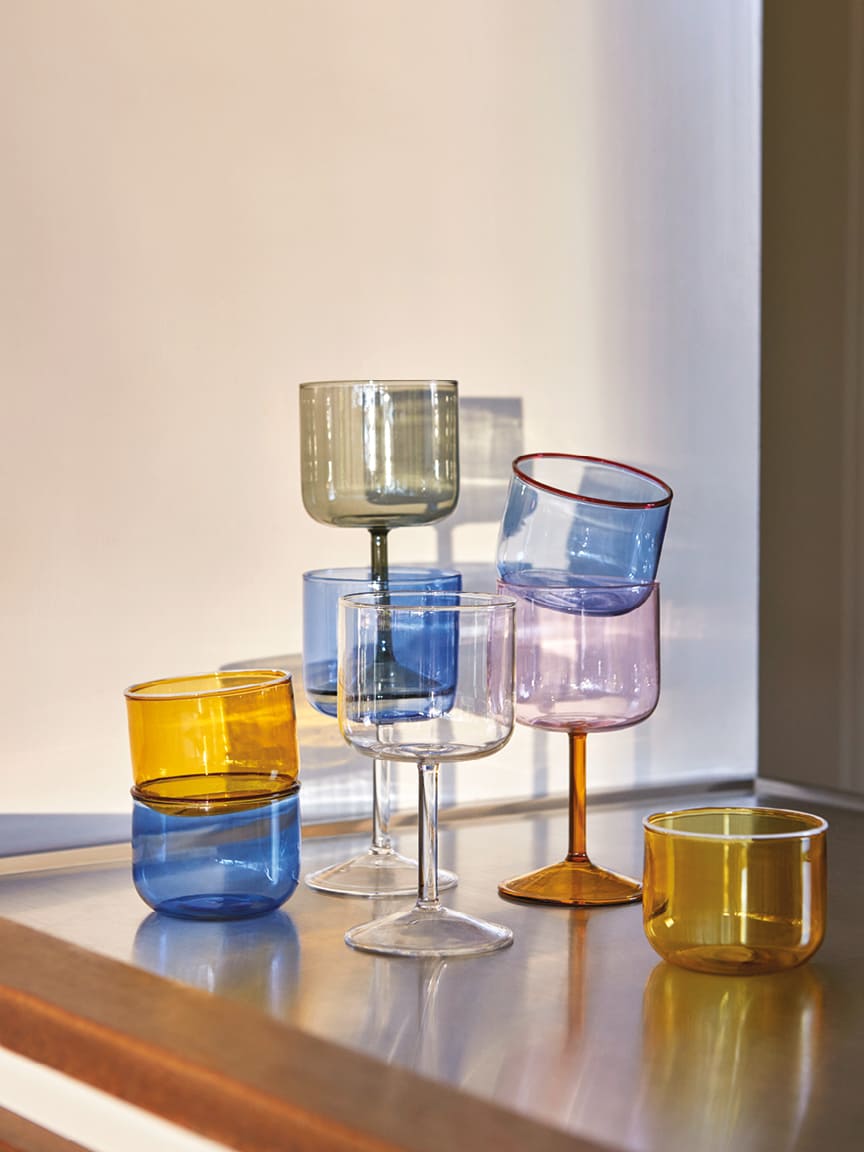
Tint by Hay
The Danish brand’s new range comes in both tinted and clear borosilicate glass, in a variety of colors.
©Hay
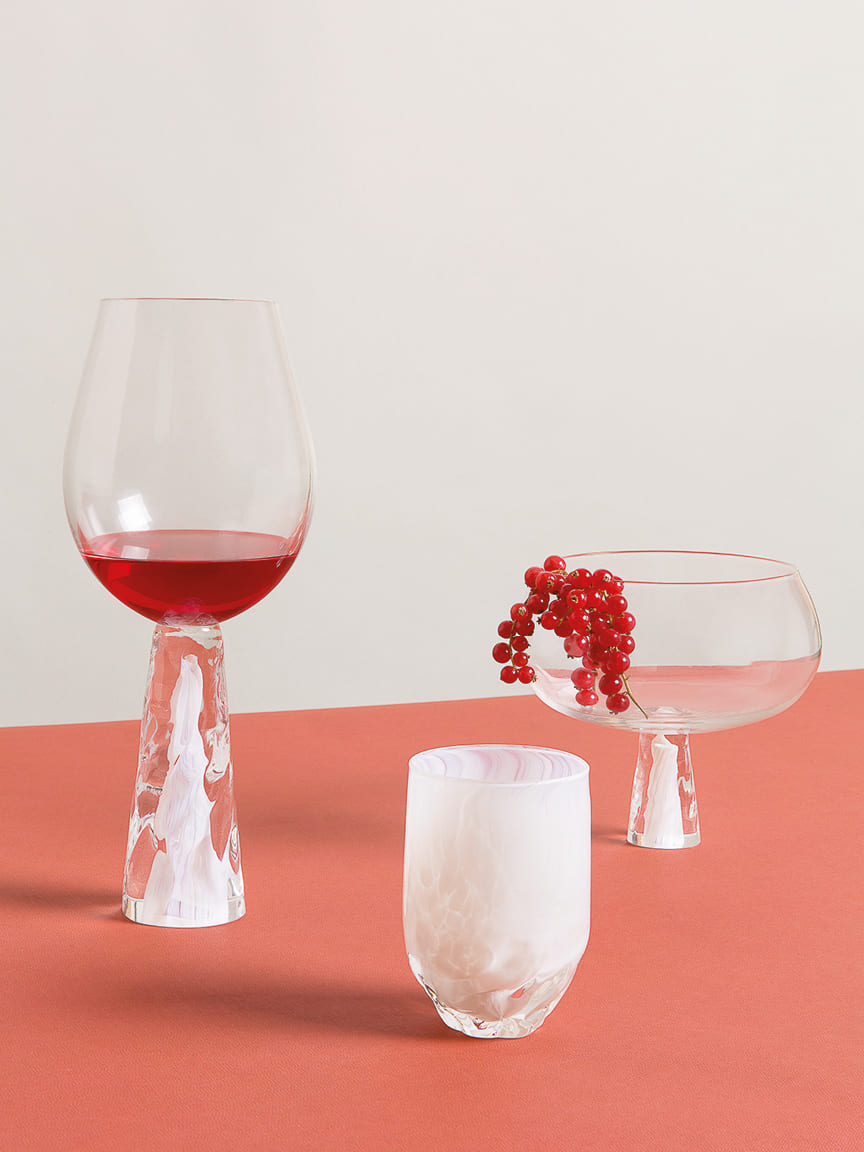
Stories of Italy by Matilde Antonacci and Dario Buratto
Designers at the Milanese atelier preserve Italian heritage and design with an experimental approach to color and form.
©Stories of Italy

Pols Potten
Designers at the Dutch brand marry striking shape and color to produce distinctive modern designs.
©Pols Potten
“Few objects evoke the conviviality of a social gathering as the glistening and clinking of a well-designed wine glass.”
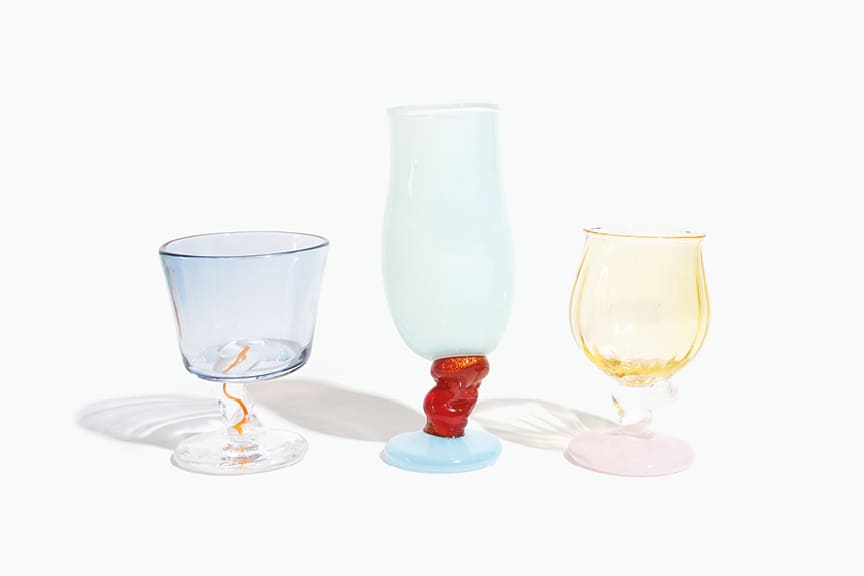
Miwa Ito
The whimsical yet refined and contemporary designs of the Japanese glassblower and artist based in Osaka are inspired by the colors of childhood.
©Miwa Ito

Fog by Matteo Zorzenoni
The Italian designer’s latest collection for Murano glass maker Nason Moretti’s is inspired by the Venetian fog and includes unstemmed wine glasses.
©Nason Moretti
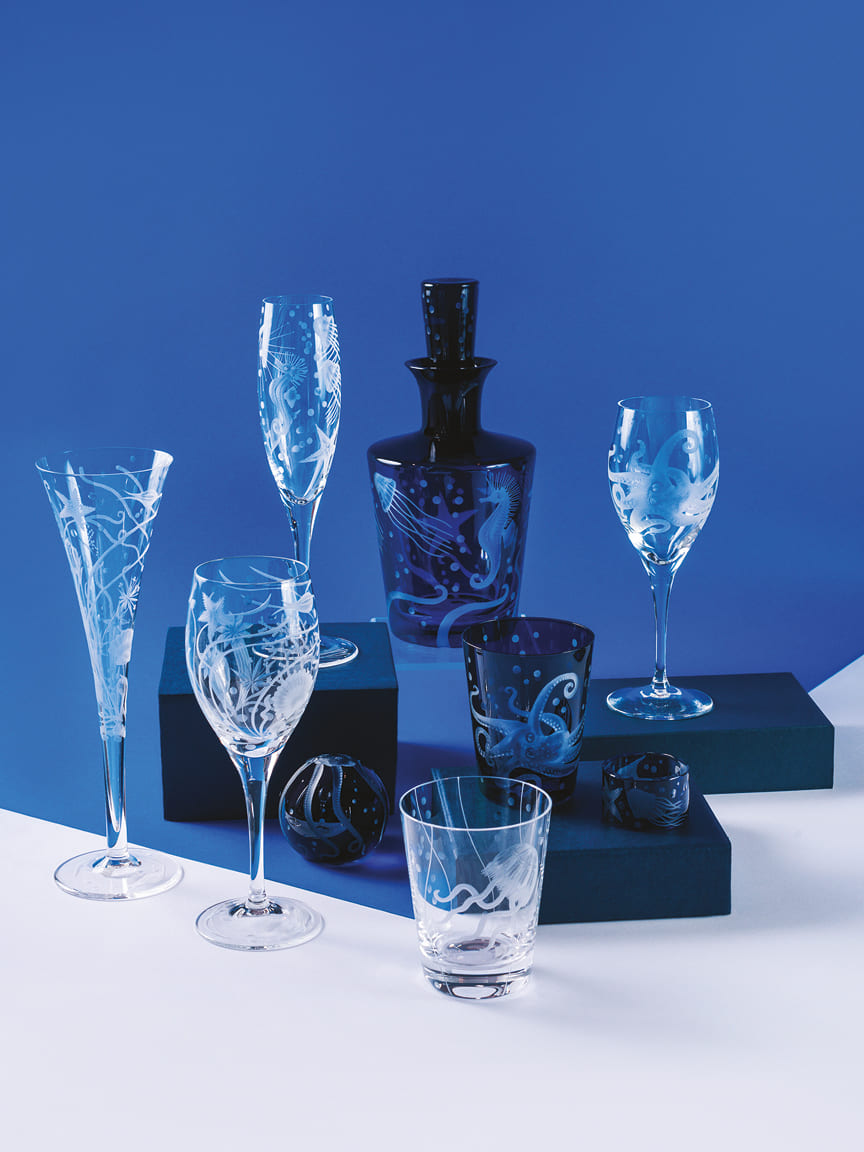
Artel by Karen Feldman
Fusing traditional Czech craftsmanship with contemporary artistic motifs to create intricate hand-engraved crystal glassware.
©Artel
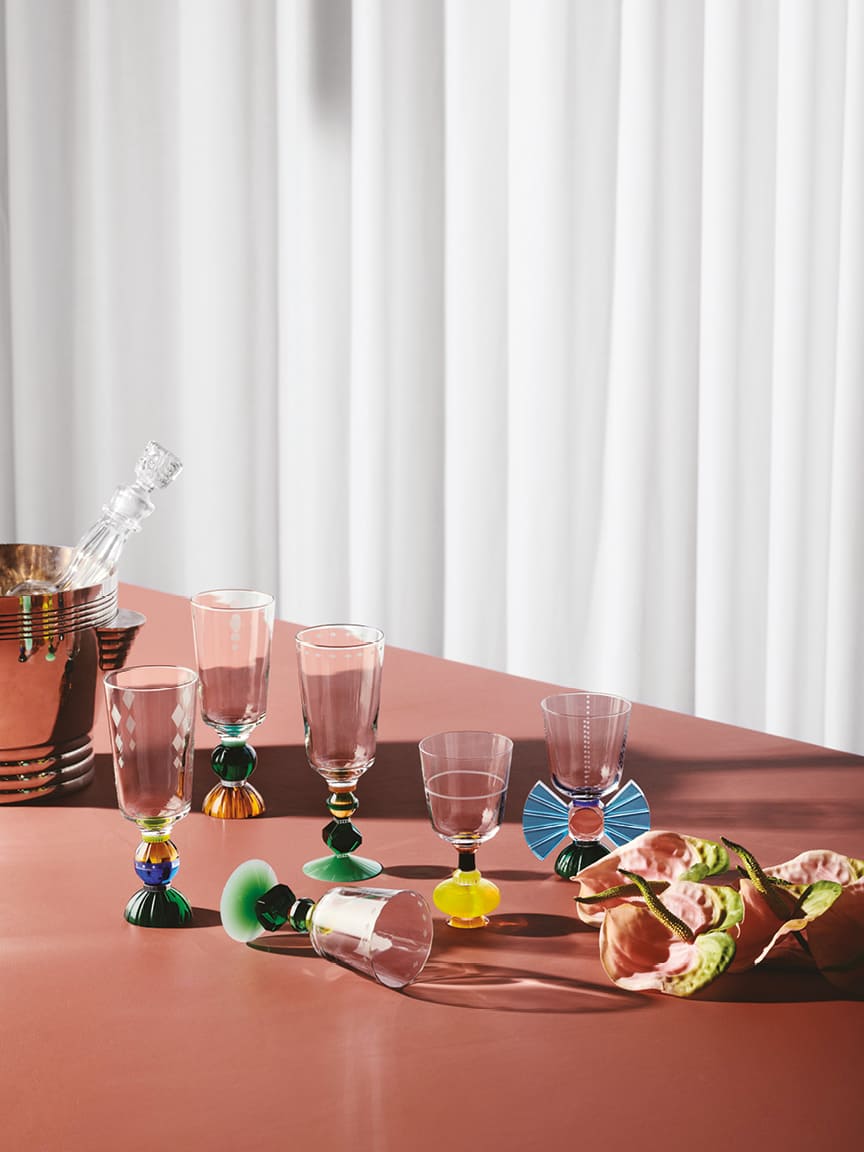
Reflections Copenhagen by Julie Hugau and Andrea Larsson
The Copenhagen designers challenge convention with their bold and vibrant geometric forms for the crystal collection.
©Reflections Copenhagen
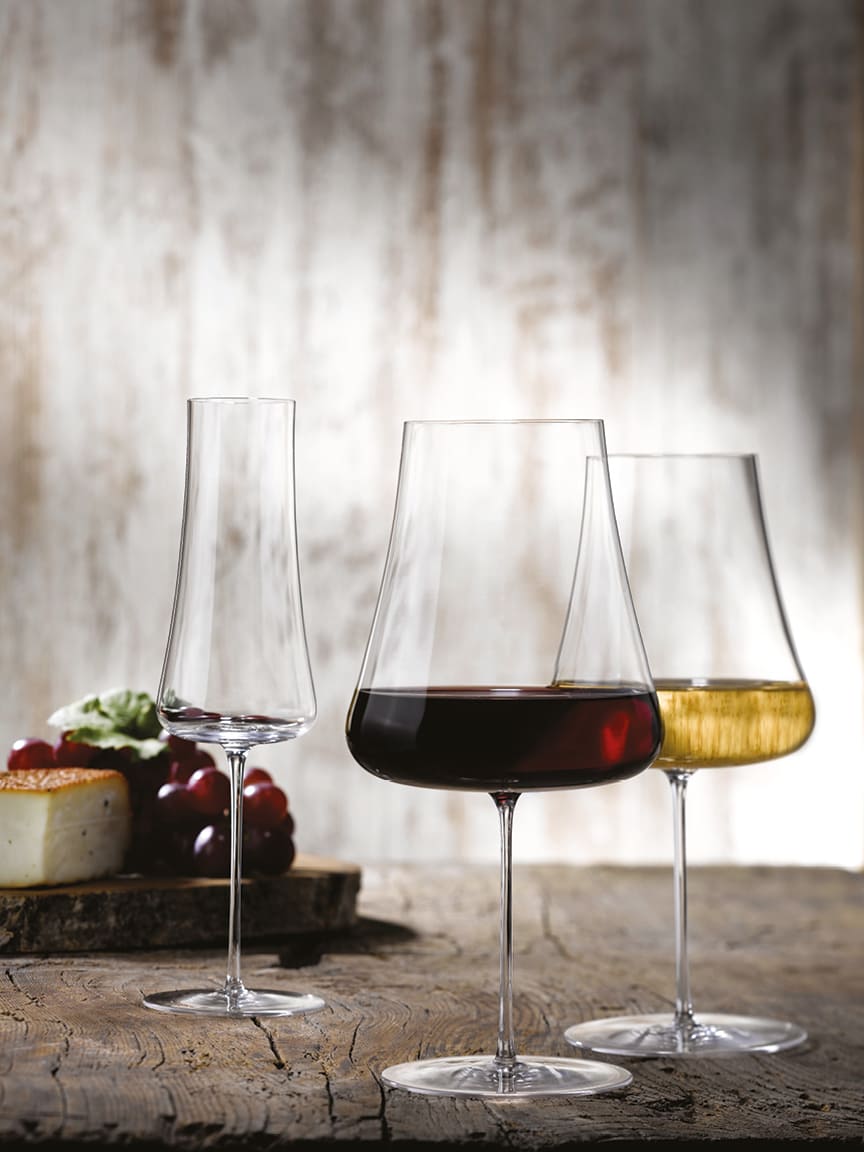
NUDE
The Istanbul-based brand bases its method on decades of Turkish tradition but looks towards the future for elegant designs suited to modern life and aesthetics.
©Nude
THE ARCHITECTURE OF WINERIES
Can architecture fundamentally alter our wine experience? Some of the world’s finest wineries believe that building design can, as Jonathan Bell takes a tour
DISCOVER THE INVENTIVE FOOD AND WINE SCENES IN EUROPE’S SECOND CITIES
European capitals can sometimes steal away from the second cities’ limelight, yet it’s often in these urban settings where the most inventive food and wine culture flourishes, reports William Hersey
FOOD TRUCKS AND WORLD CUISINE CAN LEAD TO DIVERSE WINE PAIRINGS
From London to Lisbon, New York to LA, food trucks have altered the culinary landscape. Katie Kelly Bell asks sommeliers how best to pair world street food with wine
CAN SOMMELIERS USE THEIR CRAFT TO OPEN OUR EYES TO WINE?
Sommeliers and wine educators can open our eyes to new ways of experiencing wine through artistically curated programs that tap into the mind and soul. We speak to a diverse group doing just that

